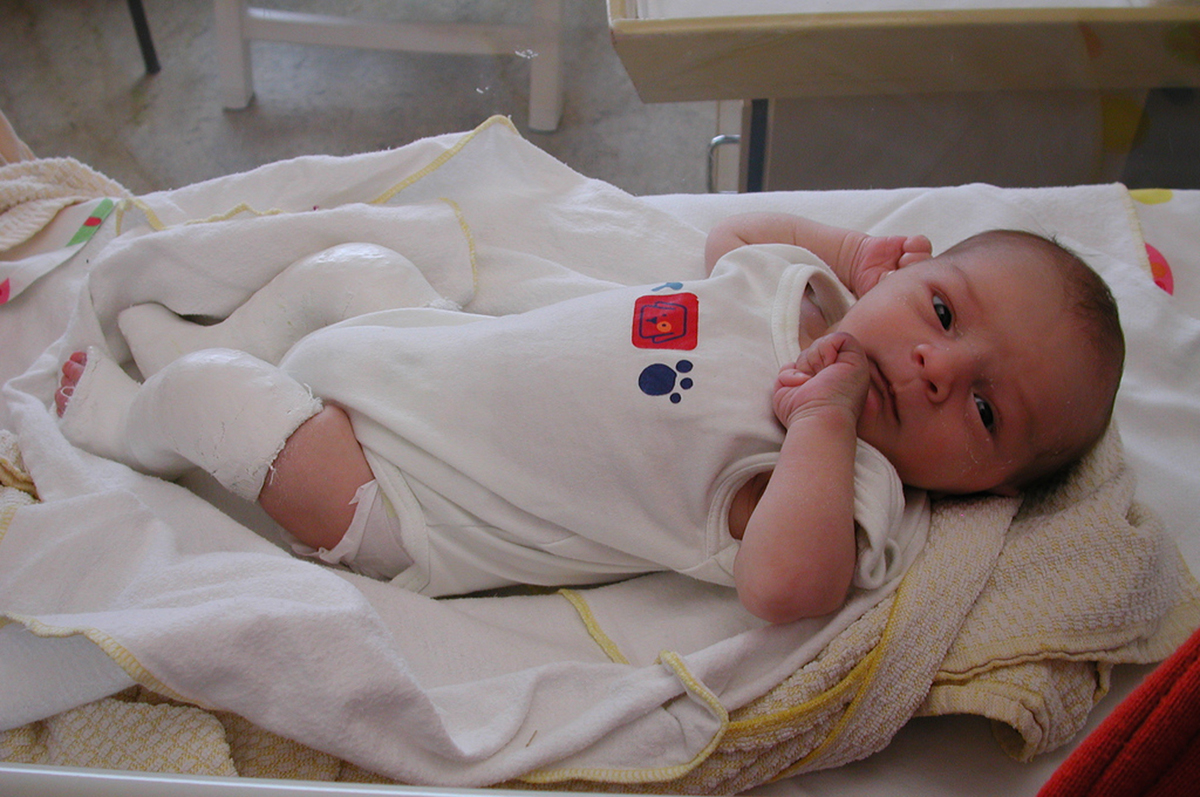Table of Contents
Clubfoot is a foot abnormality that can look scary — so parents who have just been told that their (unborn) baby suffers from this condition may well be extremely worried about what the prognosis for their baby is. Thankfully, clubfoot does not lead to pain in infants. Starting treatment immediately offers extremely good outcomes, to the point that the baby will not experience any mobility impairments later in life and the fact that they were born with clubfoot will barely be noticeable.

What Is Clubfoot?
Clubfoot sounds rather descriptive, and its name actually comes from the way in which the foot can twist outwards, making it look somewhat like a golf club. It is, however, a term used to describe a range of abnormalities of the foot, rather than a single condition. Usually present at birth, clubfoot can present in a number of ways. The foot is typically shorter than usual, particularly at the heel, and the calf muscles are underdeveloped. The foot may point towards, point inwards towards the other foot, or even point up. Clubfoot can be unilateral or bilateral, and in about half of all cases both feet are affected.
What Causes Clubfoot?
The causes of clubfoot — also called talipes equinovades — are still unclear. While some medical professionals still hold that it can be caused by something as simple as fetal malpositioning, most agree that this isn't possible. Since clubfoot is more likely to occur in babies born to families with a history of the condition, it's clear that there is a genetic component. Environmental factors are also thought to contribute.
How Is Clubfoot Diagnosed?
Unless clubfoot wasn't present at birth, the condition will be immediately visible after a baby's birth — and it can also be spotted on ultrasound scans during pregnancy. In the latter case, more detailed ultrasounds may be recommended to see if the baby has a case of nonisolated clubfoot, meaning other neuromuscular conditions that have better outcomes with prenatal diagnosis are also present.
Once a baby has been diagnosed (and born), X-rays can offer insight into the degree of the condition. No prenatal treatments are currently available for clubfoot.
READ Cleft Lip And Cleft Palate: What To Expect
Though painless at birth, clubfoot can lead to severe mobility issues if left untreated. That's why starting treatment as soon as possible is of paramount importance. A variety of treatment methods are available, and babies born with clubfoot will not need surgery to correct the condition in most cases. We'll discuss the treatment options and outcome on the next page.
- Photo courtesy of Lateral Support via Flickr: www.flickr.com/photos/sic/102281618
- Photo courtesy of ECohen via Flickr: www.flickr.com/photos/7378221@N03/672843312


Your thoughts on this